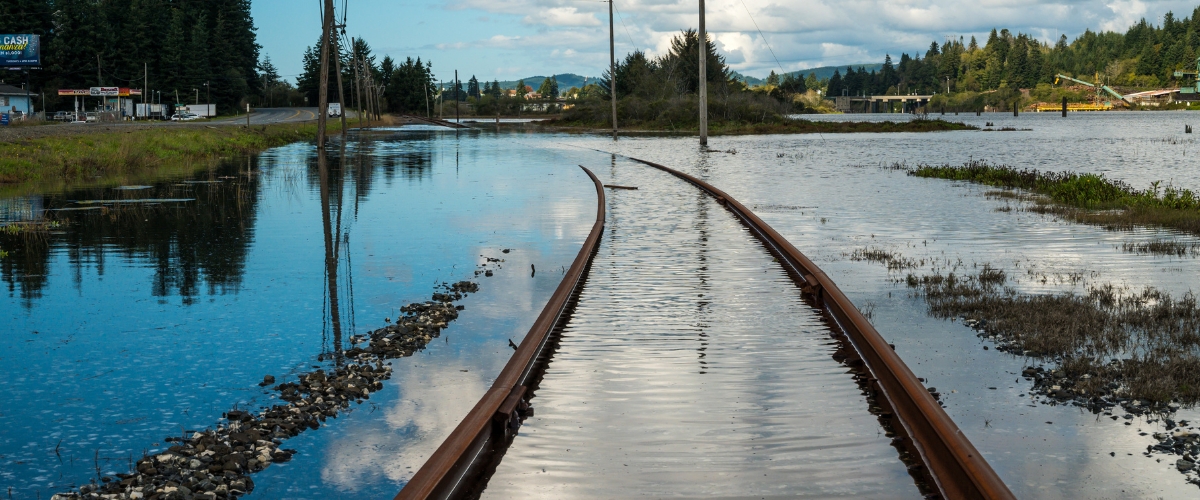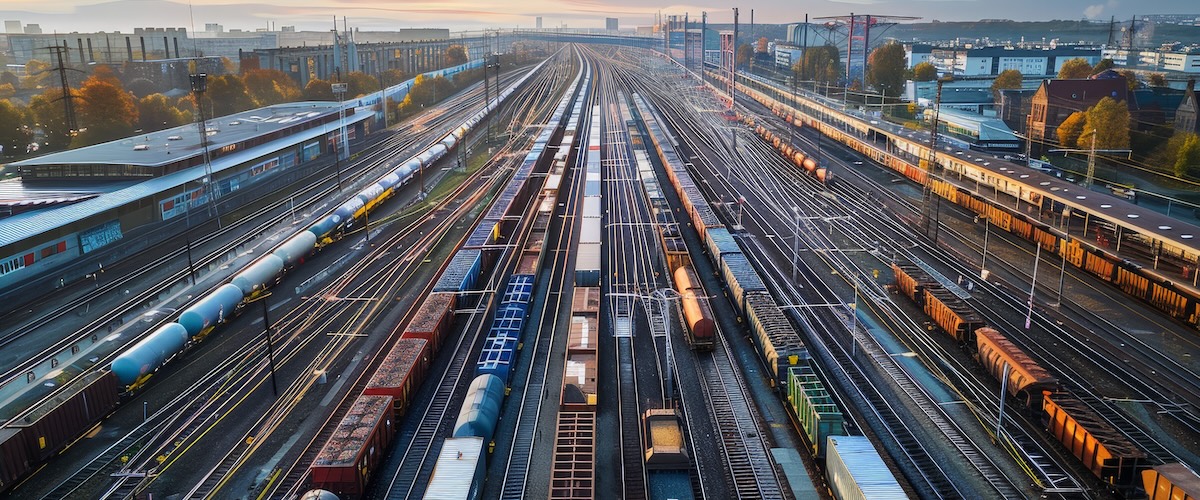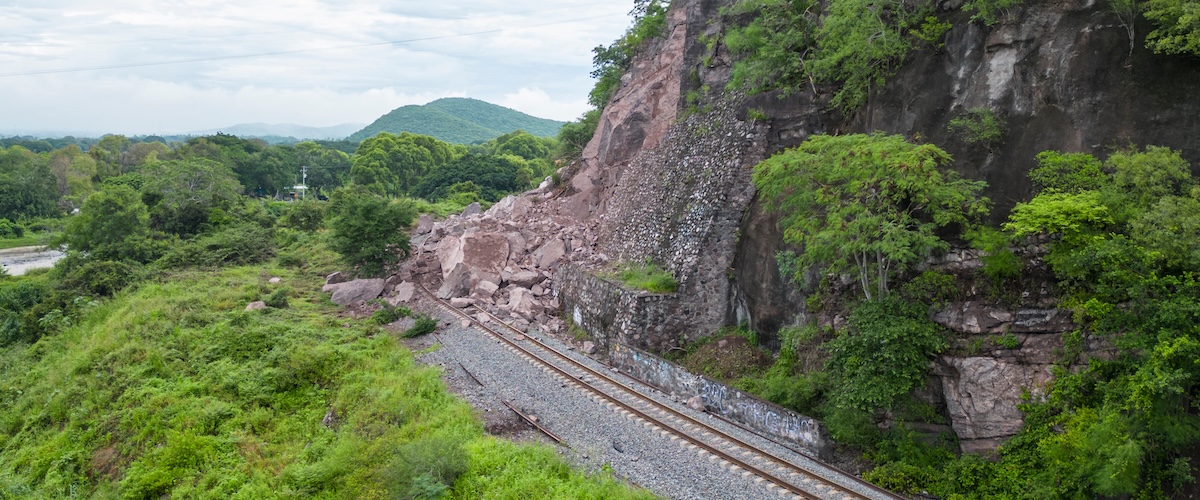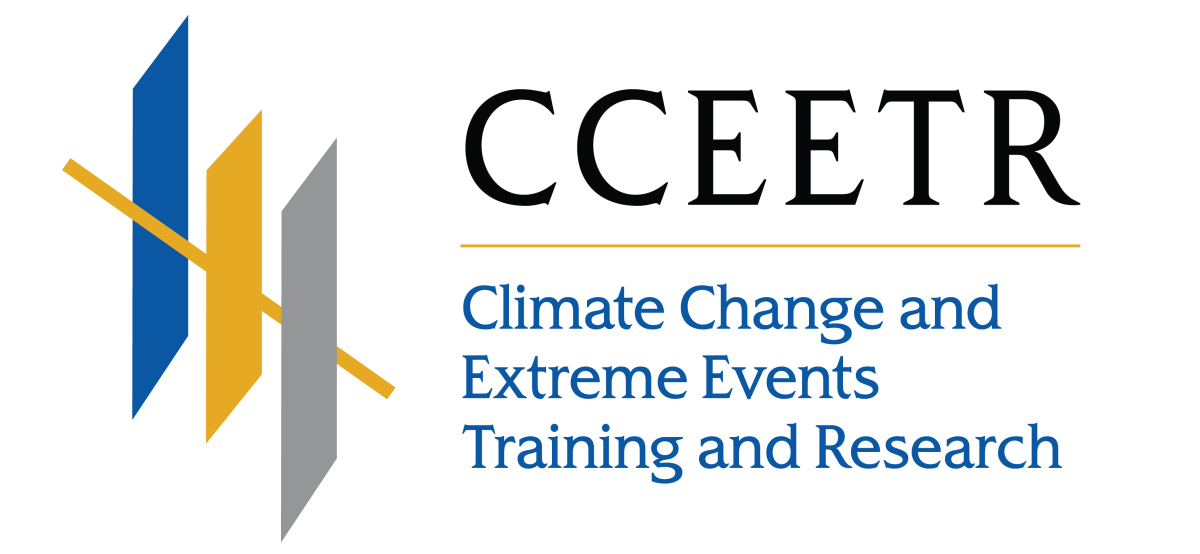- 408-924-7560
- mineta-institute@sjsu.edu
- Donate
Climate Change and Extreme Events Training and Research (CCEETR) Program

Climate change and the consequential impacts of sea-level rise, coastal storms, landslides, extreme temperatures, wildfires, and inland flooding pose a significant risk to the North American freight and passenger rail network. When these events affect a rail line, consequences include disruption of service, economic losses to the rail industry and the communities they serve, as well as injuries and fatalities.
The Center for Surface Transportation Testing and Academic Research (C-STTAR), a consortium of universities and academic research centers affiliated with the USDOT Transportation Technology Center (TTC) has established the Climate Change and Extreme Events Training and Research (CCEETR) Program led by San José State University Research Foundation through the Mineta Transportation Institute (MTI) and includes key partners at Colorado State University-Pueblo (CSU-P), Michigan State University (MSU), Oregon State University (OSU), and University of Hawaii (UH).
|
|
 |
|
|
Community Resilience Extreme Event Portal |
Pilot Study for the Detection and Prediction of Climate and Extreme Events over the North American Rail Network using Multimodal Sensor Fusion |
|
|
PI: Karl Kim, PhD (University of Hawaii) PI Email: karlk@hawaii.edu |
|
PI: Hayder Radha (Michigan State University)PI Email: radha@msu.edu |
|
The primary goal is to create a portal for enhanced alert and warning capabilities and decisionsupport tools to reduce fatalities and injuries, economic losses, and disruptions from weather and climate hazards. Other goals include research and development, technology transfer, education programs to support workforce development, economic opportunity, and improved social equity. The decision support platform for hazards, DisasterAWARE®, will be used to develop CREEP. To learn more about the project: 2. Watch a National Domestic Preparedness Consortium video about the portal |
This project will develop a novel hardware-software system for the monitoring and detection of climate-related disaster events and emergency weather conditions that could adversely impact the safety and operation of traveling trains in realtime. The primary focus of this pilot study is realtime detections and warnings. |
 |
|
|
Planning for Sustainable and Resilient Rail and Freight: Developing a Novel Tool for Analysis of Climate Adaptation and Resilience Strategies in State and Regional Rail and Freight Plans |
Preparing Railroad Organizations to Respond to Extreme Events |
|
PI: Serena Alexander, PhD (Northeastern University)PI Email: se.alexander@northeastern.edu |
|
PI: Frances Edwards, PhD (San José State University)PI Email: frances.edwards@sjsu.edu |
|
The project has two main goals: 1) to conduct an analysis of current practices and challenges of freight and rail planning to address climate change, and 2) to develop a novel public-facing and browsable database of relevant sub-national climate planning efforts—enabling transportation professionals, scholars, and citizen scientists to explore and comprehensively assess best practices and innovative ways to adapt to climate change. |
Climate change creates new challenges for all critical transportation infrastructure, especially for railroads with an open system that is continuously exposed to the elements. A Threat and Hazard Identification and Risk Assessment (THIRA) is a necessary first step for an organization to understand the challenges and develop strategies for adaptation to them. In many cases, the railroad sector is uniquely positioned to mitigate greenhouse gas emissions through mitigation steps. This guide will assist railroad risk managers and emergency managers to evaluate the risks and determine how best to respond to them through preparation, mitigation, or adaptation. The THIRA is the first step in understanding the scope of the climate change challenges faced by railroads. This is part of an ongoing series of publications/resources focused on preparing railroad organizations to respond to extreme events. To access the resources, visit: 1. Identify the Problems: Threat and Hazard Inventory and Risk Assessment (THIRA) 2. Address the Problem: Develop an Emergency Operations Plan for Extreme Events 3. Field Personnel Respond: Incident Command System (ICS) for Extreme Events on the Railroad 4. Managerial Personnel Respond: Augment the Emergency Operations Center for Extreme Events
|
 |
|
|
Risk and Resilience of Railway Infrastructure |
Southern Colorado Transportation Conference |
|
PI: Haizhong Wang, PhD (Clemson University)PI Email: haizhow@clemson.edu |
|
Conference Organizer: Md Rashad Islam, PhD, PEEmail: md.islam@csupueblo.edu |
|
To improve understanding of the impact of natural hazards on the U.S. railway system, this project developed a comprehensive,geospatially precise dataset that maps historical hazard events to specific rail segments. The project provides insight into when,where, and how much damage natural hazards have inflicted on rail infrastructure across the country. While a rail-specific hazard database did not previously exist, this research combines data from the Geological Survey (USGS) Flood Events Database, Hydrologic Unit Codes (HUC), the National Centers for Environmental Information (NCEI) from the National Oceanic and Atmospheric Administration (NOAA), and the National Weather Service (NWS) forecast zones. Using accident cause codes (e.g., T002 for flood-related track damage and T109 for sun kinks) and the external hazard data, the researchers were able to estimate both the location and economic cost of damage. Findings revealed that from 2000 to 2023, certain hazard-linked derailments caused millions in track damage—$43 million from floods (M103) and up to $85 million from extreme heat events (T109). This work lays the foundation for a national rail-hazard damage database, one that can be enhanced with industry-provided operational data. By linking hazard intensity with economic impact, the study offers critical data to inform further research as well as policymakers, planners, and industry leaders looking to improve the resilience of the U.S. rail network in the face of a changing climate and growing hazard exposure. To access the resources, visit: |
The global temperature is rising, and natural disasters such as wildfires, floods, and landslides are becoming increasingly common and more severe. Research indicates the results of multi-hazard exposure and risk to rail infrastructure could be catastrophic. Delays from temperature alone could cost $45 to $60 billion by 2100. Approximately 27% of all global road and railway assets are exposed to at least one hazard annually and 7.5% are exposed to 1/100 year flood event. What is being done to protect our nation’s critical infrastructure and our communities? Join transportation professionals and researchers for the 2nd Annual Southern Colorado Transportation Conference (SCTC) to explore this urgent issue! We will gather for a full-day conference and poster session on Monday, October 6, 2025 at Colorado State University Pueblo’s Ochiatto Student Center (OSC) Ballroom.
View 2024 SCTC PhotosView 2024 SCTC Posters |
-
Contact Us
San José State University One Washington Square, San Jose, CA 95192 Phone: 408-924-7560 Email: mineta-institute@sjsu.edu









